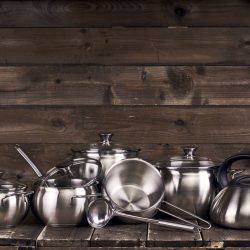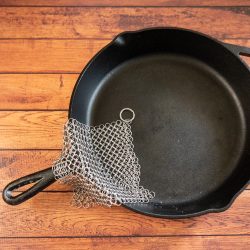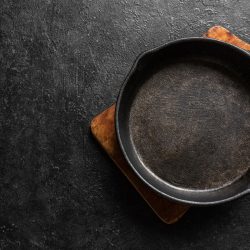Stainless steel cookware is a kitchen staple - it's durable, low-maintenance, and stylish. However, can they be harmful to your health if they are scratched? Before you toss out your good pots and pans, let's take a look below.
Scratched stainless steel pots and pans can expose you to high amounts of chromium and nickel, both harmful to your health.
However, the amount of chromium and nickel that leaches into food from scratched cookware is very low and is not a cause for concern.
If you are worried about your health, it's best to avoid using scratched cookware altogether or replace it with new cookware.
While it's not something you think about while cooking your family dinner, it's important to be aware of the safety concerns with scratched stainless steel cookware.
In this article, we will discuss why you should avoid using scratched stainless steel cookware. In addition, we will answer other frequently asked questions about stainless steel pots and pans, so read on!
Does Scratched Stainless Steel Pose A Health Risk?
Stainless steel pots and pans are popular due to their durability, low maintenance, and style. However, they will eventually become scratched if you cook a lot with them.
This happens by using metal utensils while cooking or not being careful while cleaning them.
Once they become scratched, some people may continue to use them, while others may throw them away, thinking they are now unsafe. So, the question is, are scratched stainless steel pots and pans safe to use or not?
It turns out that scratched stainless steel cookware can release chromium and nickel into food. These two metals are harmful to human health in high amounts.
The main concern is the health and safety of those with nickel allergies, as they are more likely to have a reaction.
High amounts of nickel can cause dermatitis, an inflammation of the skin. Nonetheless, the amount of nickel and chromium leaches from scratched cookware into food is very low.
Therefore, someone may not experience any health effects even if they ate food cooked in scratched cookware daily. The main concern is for those with nickel allergies, as they are more likely to have a reaction.
That said, it still makes sense to get new cookware to be on the safe side if you can afford it. In addition, you will have a more enjoyable cooking experience with new pots and pans that aren’t scratched.

Can You Drink From Cracked Stainless Steel?
Stainless steel isn't only used for cookware and drinking cups, water bottles, and more. So, what happens if your stainless steel cup or water bottle cracks?
Like scratched cookware, a cracked stainless steel cup can release chromium and nickel into the liquid inside. For example, if you drop your stainless steel water bottle and it cracks, the metal will leach into the water.
The same goes for any other liquid, such as coffee or juice. As a result, you may want to avoid using cracked stainless steel cups or bottles.
If you use them, replace them as soon as possible so you don't consume too much metal.
What Cookware Is Healthiest To Use?
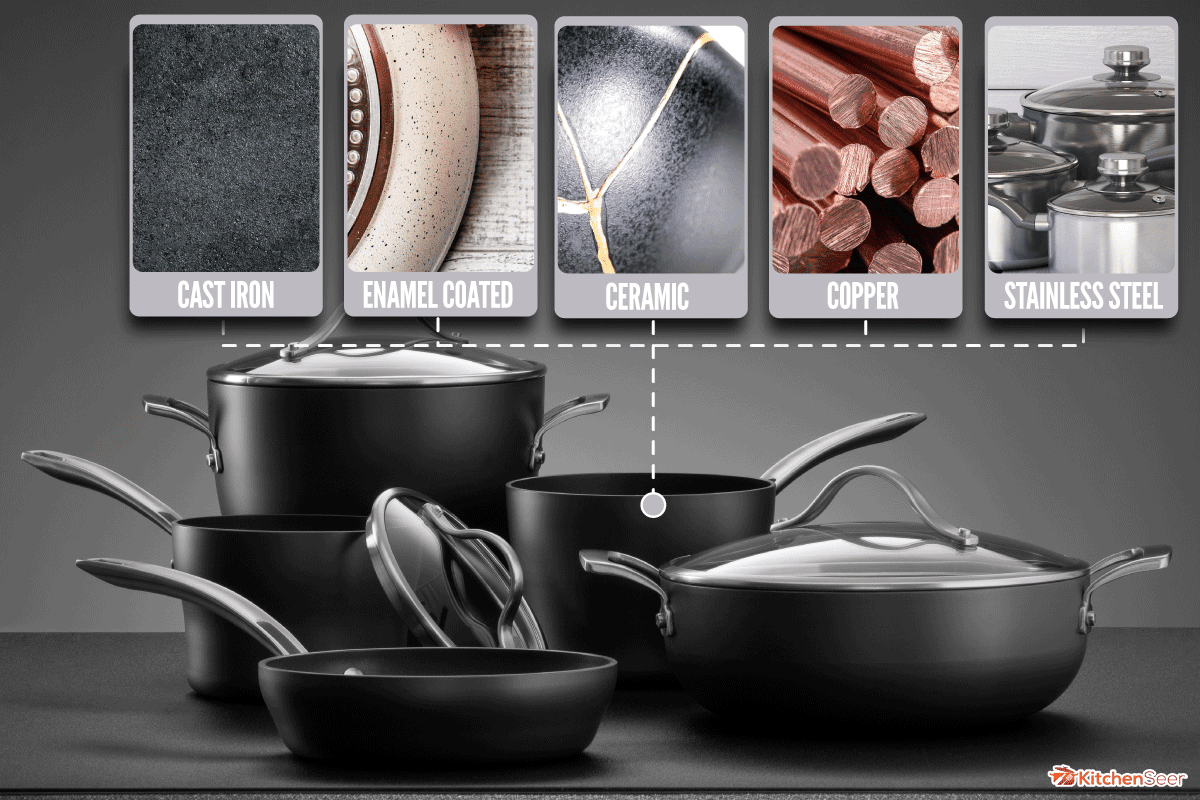
Nowadays, several different types of cookware are available on the market, such as ceramic, cast iron, and stainless steel. So, what is the healthiest option?
It depends on your personal preferences and needs. However, they all have their benefits and drawbacks.
Let's take a look at some healthy cookware options:
Cast Iron
Not only is cast iron one of the durable options, but it can also help increase the iron content in your food. This is especially beneficial for those who don't eat meat or have an iron deficiency.
One downside of cast iron is that it can rust if not properly seasoned or taken care of. In addition, it's not the best option for cooking acidic foods as it can cause the food to taste metallic.
Be sure to follow the manufacturer's instructions on how to properly season and care for your cast iron cookware.
Enamel-Coated Cast Iron
Another great option is enamel-coated cast iron. It has all the benefits of regular cast iron but is less likely to rust and doesn't interact with acidic foods.
The enamel coating is like a type of protective layer that's applied to the cookware. Similar to glass, it is non-toxic and doesn't leach chemicals into food.
However, these enamel-coated cast iron are prone to scratching. So, be careful not to use any sharp utensils on them.
Ceramic
Lead-free ceramic cookware is a good option as it doesn't release harmful toxins into food. It's also non-stick, so you won't need to use as much oil when cooking.
However, ceramic cookware can be more delicate than other options and may not last as long. For example, ceramic has a tough time withstanding high heat, so it's not the best option for stovetop cooking.
Copper
Copper alone is good for your health in moderate doses. In addition, copper cookware has fast and even heat conductivity. This means that your food will cook evenly without any hotspots.
However, too much copper can be dangerous as it can cause nausea, vomiting, and diarrhea. Therefore, you should avoid using copper cookware if you have a copper deficiency or are pregnant.
Nonetheless, copper's lightweight and durable nature makes it a popular choice for many people.
Stainless Steel
As we mentioned before, stainless steel is a popular option as it's durable and low maintenance. As long it is in good condition and not scratched, it won't leach any toxins into food.
However, stainless steel can be more expensive than other options and is not ideal for cooking acidic foods. In addition, be sure to get stainless steel cookware with 18/10 or 18/8 on the bottom, as this indicates that it is high-quality.
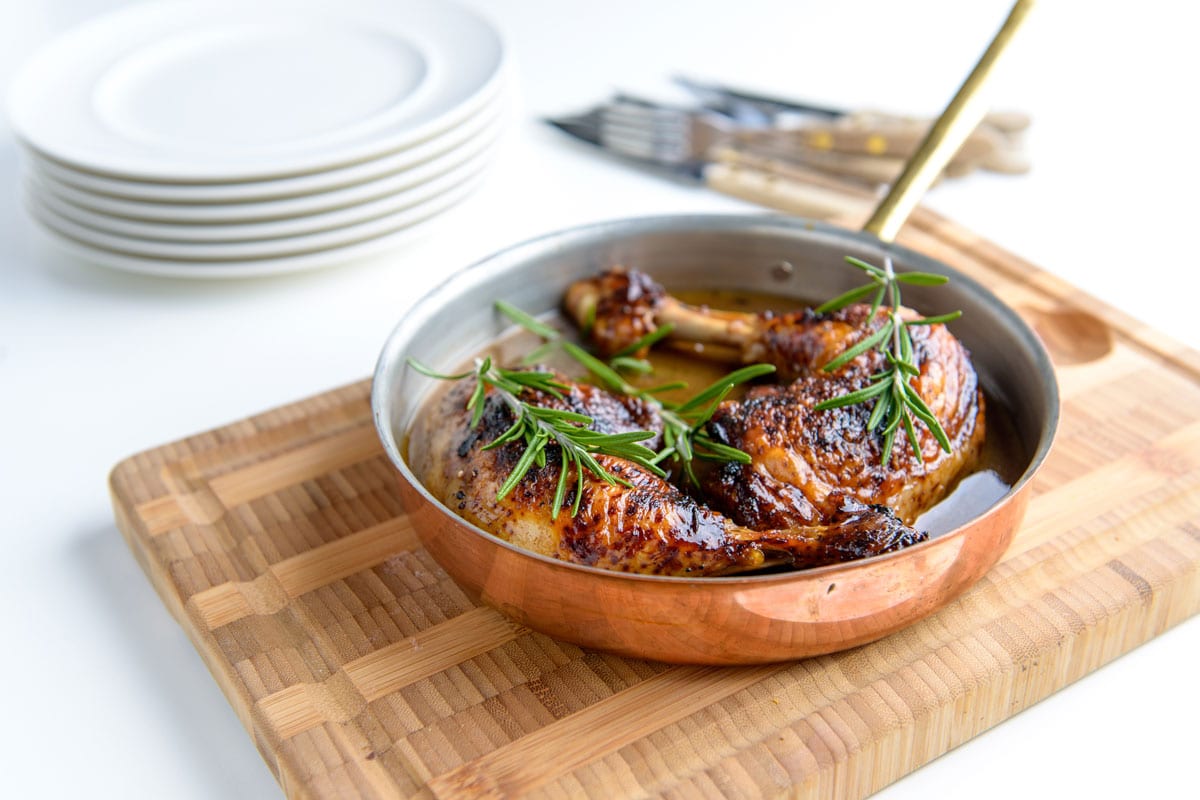
How Long Does Stainless Steel Cookware Last?
Depending on how much you use it and how well you take care of it, stainless steel cookware can last for years or even decades.
To help prolong the life of your cookware, avoid using metal utensils, as they can scratch the surface. In addition, don't put your cookware in the dishwasher as this can also damage it.
The best way to clean stainless steel cookware is by hand with hot soapy water. In addition, stick to a sponge instead of a metal scrubber to avoid damage.
How Do You Fix Scratched Stainless Steel Cookware?
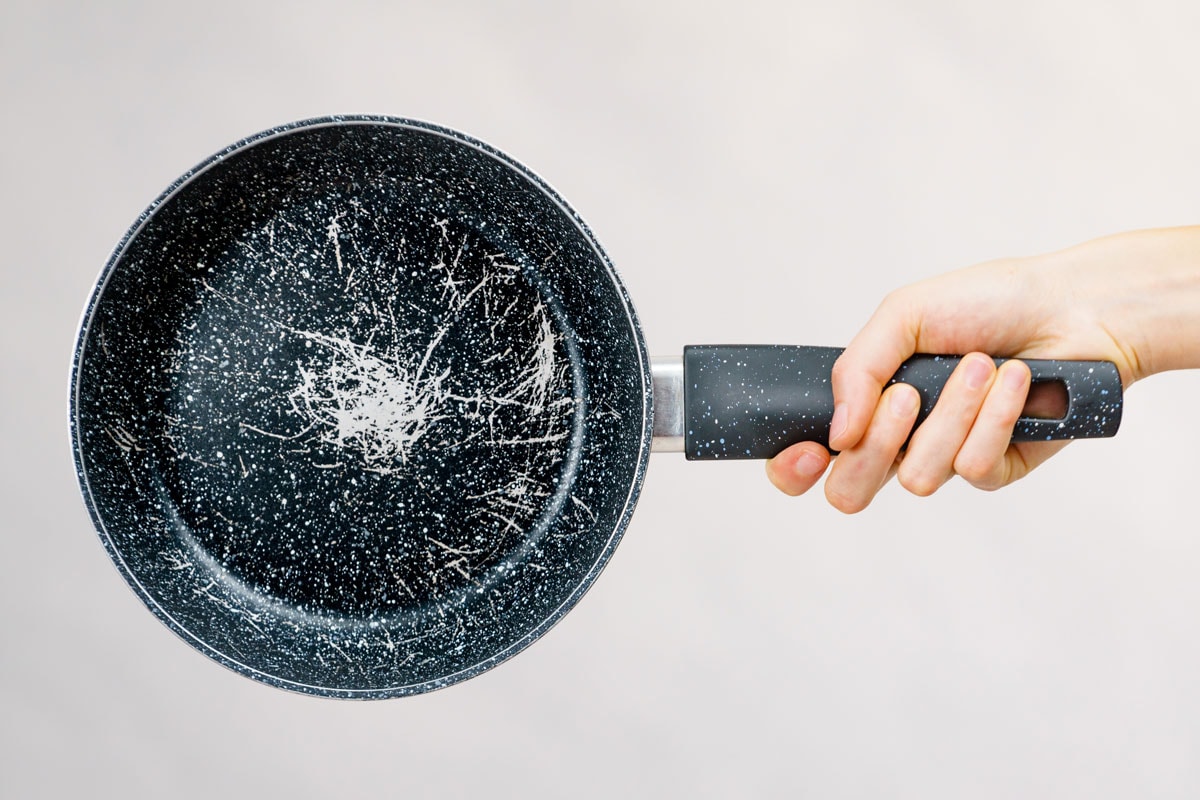
Depending on the severity of the scratches, there are a few different ways you can try to fix them.
If the scratch is minor, you can try using a metal polish or a mildly abrasive cleaning detergent. In addition, baking soda can also be used to buff out minor scratches.
When it comes to getting out the scratches in stainless steel, elbow grease is the key. So, don't be afraid to put in a little effort to make your cookware look new.
However, if the scratches are deep, you might need to replace the cookware entirely.
When Should You Throw Away Non-Stick Pans?
While a good cooking set of non-stick pans can last for years, eventually, they will need to be replaced.
The first sign that your non-stick pan is ready to be retired is when the coating starts to peel off. When this happens, there's a risk of the coating ending up in your food.
Another sign that it's time to say goodbye to your non-stick pan is if it starts to stick. This is usually due to the coating being worn down and not being as effective as it once was.
In addition, discoloration or warping are also signs that it's time to get a new pan.
When it comes to non-stick cookware, the key is to replace it before it starts to wear down too much. This will help ensure that your food doesn't end up with any harmful toxins.
Is Black Residue Safe On Stainless Steel Cookware Safe?
If you see black residue on your stainless steel cookware, it is most likely from chromium rust.
Chromium is a naturally occurring element that is found in stainless steel. When chromium comes into contact with oxygen, it forms a thin layer of chromium oxide on the cookware's surface.
While the black residue is safe, it can be unsightly. In addition, if the chromium oxide layer becomes too thick, it can affect the cookware's ability to function correctly.
If you want to remove the black residue, use a polish specifically designed for stainless steel.
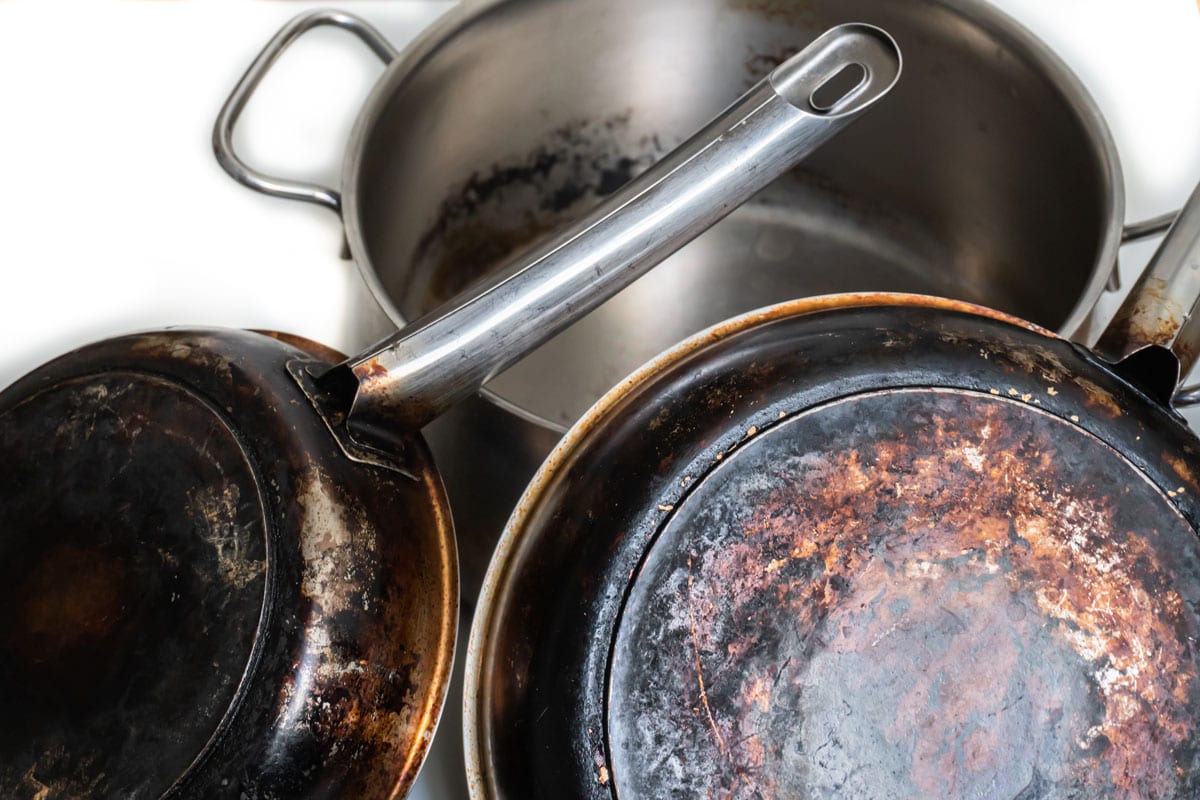
Final Thoughts
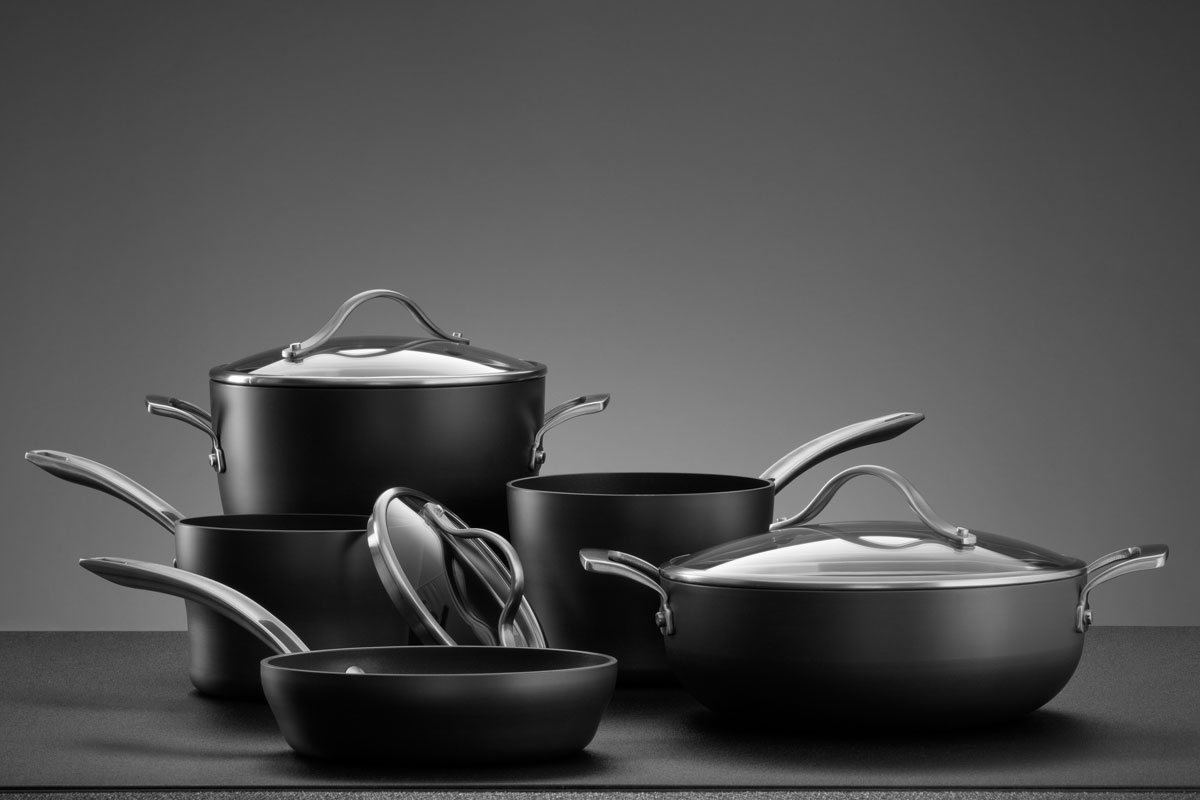
While stainless still is considered non-toxic, it can still leach toxins into food. Avoid using metal utensils, as they can scratch the surface. In addition, you can use different types of cleaners to get out the scratches.
Made it to the end? Here are other articles you might enjoy:
Blackstone Griddle Black Vs. Stainless Steel: Which To Choose?
How To Keep Pancakes From Sticking To Stainless Steel Pan
How To Remove Scratches From Stainless Steel Refrigerator Door

